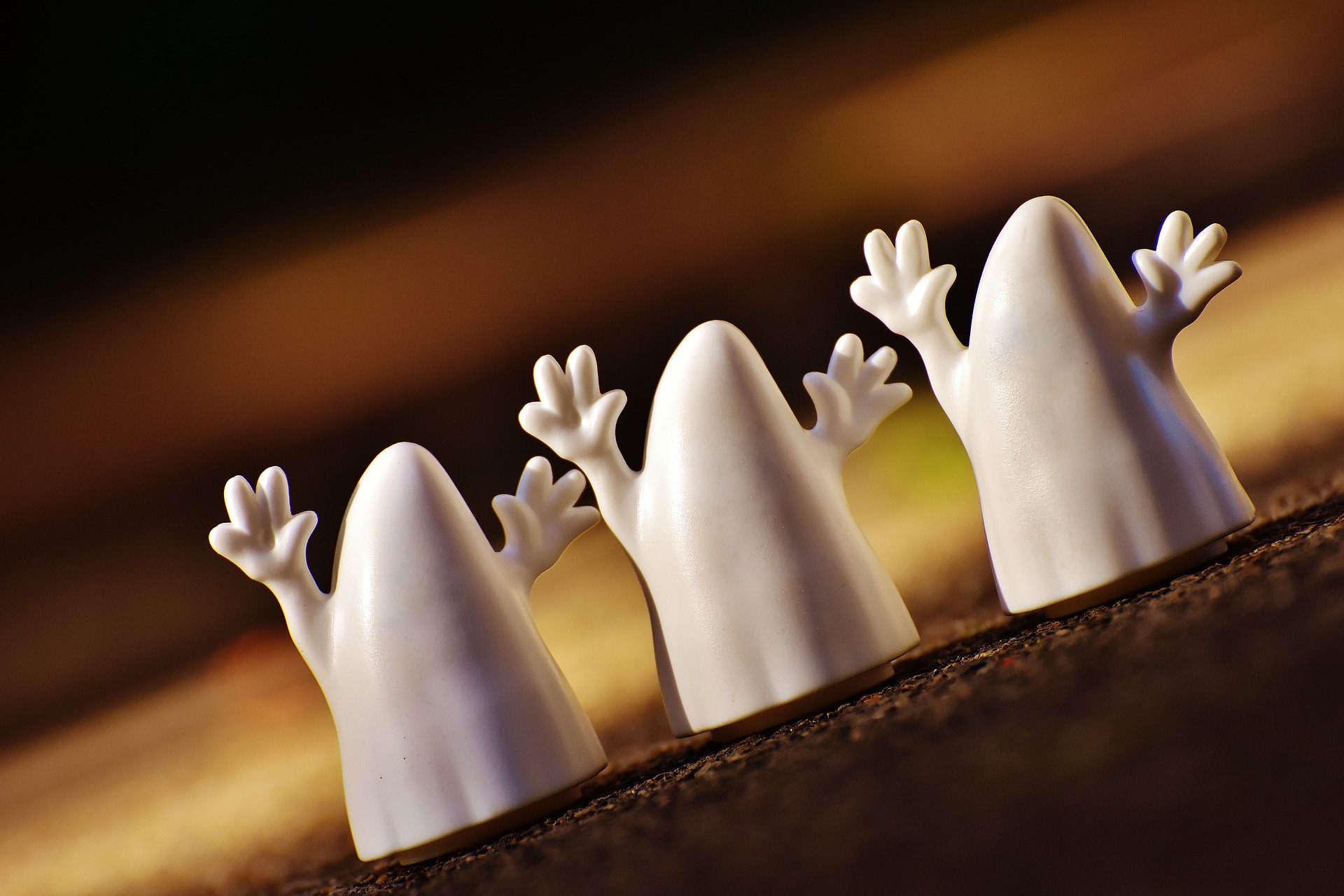Schema theory
 When expert football players like Harry Kane kick the ball directly into the goal during a penalty, it may look like any other goal to some of us. However, besides a good deal of self-confidence, this particular kick is the result of many hours of practice and a combination of cognitive processes. Harry needs to take into consideration the position of the goalkeeper and predict possible reactions, as well as determine how he should kick the ball. All this is done based on his previous experience, which is stored in his memory as knowledge and skills - but there is even more to it. Players need to modify their behaviour to fit the particular challenge at hand. His kick must be executed based on visual information and a prediction of possible consequences. A lot of this is based on the recognition of patterns. This “how-to-score knowledge” will help him decide what aspects of the situation he needs to pay attention to in order to place the football accurately in the goal.
When expert football players like Harry Kane kick the ball directly into the goal during a penalty, it may look like any other goal to some of us. However, besides a good deal of self-confidence, this particular kick is the result of many hours of practice and a combination of cognitive processes. Harry needs to take into consideration the position of the goalkeeper and predict possible reactions, as well as determine how he should kick the ball. All this is done based on his previous experience, which is stored in his memory as knowledge and skills - but there is even more to it. Players need to modify their behaviour to fit the particular challenge at hand. His kick must be executed based on visual information and a prediction of possible consequences. A lot of this is based on the recognition of patterns. This “how-to-score knowledge” will help him decide what aspects of the situation he needs to pay attention to in order to place the football accurately in the goal.
Schema and scripts - definitions of terms
The human mind is quite sophisticated. It manipulates mental representations of objects in the real world when we think, make plans, imagine or problem solve. Schemas are mental representations that are derived from prior experience and knowledge. The bottom-up information derived from the senses is interpreted by the top-down influence of relevant schemas in order to determine which behavoiur is most appropriate. Schemas help us to predict what to expect based on what has happened before. They are used to organize our knowledge, to assist recall, to guide our behaviour, and to help us to make sense of current experiences.
Schema help our minds to simplify the world around us. For example, we all have a schema for a telephone. If someone hands me their mobile phone and asks me to quickly call a doctor, I don't look at the phone and go, "I don't know. I have never used THIS phone before!" Instead, I have a schema for how a phone works that allows me to use the phone, regardless of the brand. Perhaps this particular phone has features I have never seen before. If that is true, then I will learn about those features by having to use the phone and then those features will be assimilated into my schema of mobile phones.
Looking at the example of Kane, he has to use a number of schema when making his kick. First, he has a schema for the field on which he is playing. He knows how far he has to kick the ball, the positions that players will take and he knows what goalies do. In addition, he will have a schema for the opposing team or maybe specifically, the particularly goalie. He knows whether they are they top team in the league, very strong on offense, but terrible at defense, or that the goalie is left-handed. He uses all of this information to make predictions that help him to decide the best way to deliver the penalty kick.
When we discuss how things work, such as "how to score knowledge", this is referred to as a script. Scripts are patterns of behaviour that are learned through our interaction with the environment. We have scripts for what to expect when one goes to the movies, the appropriate way to eat a plate of spaghetti, and what behaviour is expected on a first date. Scripts are developed within a cultural context - they are not universal. When we travel, we often find that our scripts don't lead to the predicted outcomes we expect. For example, if your script for stores involves going into a shop, picking up what you need, standing in line, and then paying the price on the label, you will find that many cultures around the world do not follow this script. In many places, lines are not part of the culture of shopping and bargaining is the only way to decide how much you have to pay. If this is not your script for shopping, you may be confused or frustrated in this situation. But with experience, you will eventually incorporate this knowledge into your script for how you shop.
Getting back to Kane, there are a few scripts that he will follow. First, there is the script for how to actually kick the ball into the goal. This will be the result of a lot of practice. But he will also have a script for how to behave if he is successful - maybe tearing off his shirt - or if he is not - putting his head into his hands and pausing before returning to his teammates.
Schema theory is a theory of how humans process incoming information, relate it to existing knowledge, and use it. The theory is based on the assumption that humans are active processors of information. People do not passively respond to information. They interpret and integrate it to make sense of their experiences, but they are not always aware of it. If information is missing, the brain fills in the blanks based on existing schemas. Obviously, this can result in mistakes. In the later part of this unit, we will look at two particular mistakes - memory distortion and errors in decision making.
Schema theory and memory
The British psychologist Frederic Bartlett was a pioneer in developing schema theory. Bartlett was one of the first to suggest that cognitive schemas can be seen as specific knowledge organized and stored in memory that can be accessed and used when it is needed. It is of course not possible to see a schema inside someone’s head, but using concepts like schemas helps psychologists to understand and discuss how the mind works.
TOK: Evidence and explanation
 In cognitive psychology, schema are one of the building blocks of many theories. However, it is not possible to see schema, even with modern brain imaging technology. Does this matter?
In cognitive psychology, schema are one of the building blocks of many theories. However, it is not possible to see schema, even with modern brain imaging technology. Does this matter?
The early Freudians argued that we could study what was in the unconscious mind. Behaviourists reacted against this and argued that we should only study that which can be observed. Cognitive theorists found a middle ground; they argued that we should study what we cannot directly observe, but we must use scientific approaches.
Consider the following questions:
1. What are some things that we believe to be true, even though we cannot directly see them?
2. How important is it to be able to see something in order to explain how something works?
3. What type of evidence would you want for something that is not seeable?
What are some things that we believe to be true, even though we cannot directly see them?
There could be a range of examples. They could be religious - eg. God. They could be scientific: air, gravity, protons, viruses. They could be things that are more complex concepts: climate change, the earth is not flat.
How important is it to be able to see something to know that it is true?
For some people, seeing is believing. They may not believe in God or even in schema - but they may believe in air and gravity. So, the question for many people is not whether they can see it or not, but what the evidence is for these "unseen" phenomena. One of the questions is - why is not seen? Is it because it is too small? Too slow? Somehow hidden?
What type of evidence would you want for something that is not seeable?
We usually look for indirect evidence that something exists. This could be looking at brain activity in an fMRI, seeing the symptoms caused by a theoretical virus, or being able to apply an explanation - like schema theory - to answer a range of questions or solve a range of problems.
In the cognitive approach, it is assumed that cognitive processes are influenced by social and cultural factors. Bartlett was one of the first to show how cultural schema influence remembering. He found that people had problems remembering a story from another culture and that they reconstructed the story to fit in with their own cultural schemas. Bartlett demonstrated that memory is not like a photograph or an audio recording, but rather that people remember in terms of what makes sense to them. This is why memory is subject to distortions.
Bartlett used an experiment in order to study the role of schema in recalling a story from an unfamiliar culture. One of the techniques he used was serial reproduction, where participant A reads a story and then reproduces it to participant B who then reproduces it to participant C, and so on until six or seven reproductions have been created.
A second technique used by Bartlett was repeated reproduction. In repeated reproduction, a participant learns the material and then recalls it repeatedly over various testing occasions. It is the same person who recalls the same story each time.
ATL: Inquiry
 Ask two people to write down a story. For each story, place 8 - 10 people in a line and ask each of them to whisper the story to the person standing behind them. The last person in the line has to say the story out loud. Record the final version of the story so that you can easily compare it to the original, written text.
Ask two people to write down a story. For each story, place 8 - 10 people in a line and ask each of them to whisper the story to the person standing behind them. The last person in the line has to say the story out loud. Record the final version of the story so that you can easily compare it to the original, written text.
Questions to consider
1. What is the best way for you to compare the final version to the original?
2. Discuss the changes between the original story and the final story. What kind of changes were made? Is there a consistent pattern?
1. What is the best way for you to compare the final version to the original?
This is a good discussion for students at the beginning of their study of memory as very often researchers are reading stories and asking participants to recall what they remember. Very often researchers come up with "phrases" that are the building blocks of a story. This can be problematic, though, when a person remembers part of that phrase or misremembers or distorts the phrase. There could be specific words, but this is a slow a more artificial way of recalling a story - and not all of the concepts or words in the story have the same weight. If the researcher chooses a list of the 20 "most significant" ideas or words in a piece of text, how is this determined? And what if the participants remember other details that are not on the list? Or if they change the word - like in Bartlett's study - from canoe to boat?
2. Discuss the changes between the original story and the final story. What kind of changes were made? Is there a consistent pattern?
If their replication matches Bartlett's findings, they should see that there are three distinct patterns. First, details that are deemed as not important are removed from the story. In addition, emotion and other details may be added to the story to make it more exciting, coherent, or meaningful to the participants. Finally, the details of the story may be changed to make them more familiar to the participants - e.g. a "diary" may become a book or a "canoe" could become a boat.
Research in psychology: Bartlett (1932)
 The aim of Bartlett's classic study was to investigate how the memory of a story is affected by previous knowledge. He wanted to see if cultural background and unfamiliarity with a text would lead to distortion of memory when the story was recalled. Bartlett’s hypothesis was that memory is reconstructive and that people store and retrieve information according to expectations formed by cultural schemas.
The aim of Bartlett's classic study was to investigate how the memory of a story is affected by previous knowledge. He wanted to see if cultural background and unfamiliarity with a text would lead to distortion of memory when the story was recalled. Bartlett’s hypothesis was that memory is reconstructive and that people store and retrieve information according to expectations formed by cultural schemas.
Bartlett told participants a Native American legend called The War of the Ghosts. The participants were British; for them, the story was filled with unfamiliar names and concepts, and the style was foreign to them.
Bartlett allocated the participants to one of two conditions. One group was asked to use repeated reproduction, where participants heard the story and were told to reproduce it after a short time and then to do so again repeatedly over a period of days, weeks, months or years. The second group was told to use serial reproduction, in which they had to recall the story and repeat it to another person.
Bartlett found that there was no significant difference between the way that the groups recalled the story. Over time the story became shorter; Bartlett found that after six or seven reproductions, it was reduced to 180 words. The story also became more conventional - that is, it retained only those details that could be assimilated to the social and cultural background of the participants. For example, instead of "hunting seals," participants remembered that the men in the story were fishing; the word "canoe" was changed to the word "boat."
Bartlett found that there were three patterns of distortion that took place. The story became more consistent with the participants’ own cultural expectations - that is, details were unconsciously changed to fit the norms of British culture. The story also became shorter with each retelling as participants omitted information that was seen as not important. Finally, participants also tended to change the order of the story in order to make sense of it using terms more familiar to the culture of the participants. They also added detail and/or emotions. The participants overall remembered the main themes in the story but changed the unfamiliar elements to match their own cultural expectations so that the story remained a coherent whole although changed.
Bartlett wanted to study memory in a naturalistic setting meaning that he would give participants some tasks that could be encountered in real life - for example, remembering a story. Bartlett documented his research procedures but he has been criticized for not being specific enough which has made it difficult to replicate his findings. For example, he did not standardize the intervals at which participants reproduced the material they had learned. In addition, no significant independent variable was manipulated with other factors held constant to observe its systematic effect on some dependent variable. Psychologists are critical of Bartlett's methods on the grounds that they were not scientific in a modern sense.
Many researchers have attempted to replicate the findings of Bartlett's original study, but they have not been successful. This would indicate that the findings have low reliability. This would make sense since Bartlett did not use a standardized procedure. Bergman & Roedeger (1999) carried out a replication with a slight twist. The independent variable was the amount of delay before the retelling of the story. They found that when there was a 15-minute delay in the first retelling of the story, there was a higher rate of distortion than if the story were replicated immediately. The immediate retelling of the story was often highly accurate and resulted in less distortion over time.
Bartlett's suggestion that schemas are complex unconscious knowledge structures is one of Bartlett's major contributions to psychology, in spite of the sloppy nature of his original study. His research was one of the first to investigate mental processes in a time where psychological science insisted on studying only behaviours that could be directly observed.
Schema theory has been used to explain how memory works. Cognitive psychologists divide memory processes into three main stages:
- Encoding: transforming sensory information into memory.
- Storage: creating a biological trace of the encoded information in memory, which is either consolidated or lost
- Retrieval: using the stored information in thinking, problem-solving, and decision-making.
It is now believed that schema processing can affect memory at all stages. This is shown in the following research study.
Research in psychology: Brewer and Treyens (1981)
 Brewer and Treyens wanted to study the role of schema in the encoding and retrieval of memory. To do so, they carried out an experiment to see how well people could recall what was in an office.
Brewer and Treyens wanted to study the role of schema in the encoding and retrieval of memory. To do so, they carried out an experiment to see how well people could recall what was in an office.
The sample was made up of 86 university psychology students. Participants were seated in a room that was made to look like an office. The room consisted of objects that were typical of offices: a typewriter, paper, and a coffee pot. There was also a table with tools and electronics. There were shelves along one wall and the other walls were decorated with posters and a calendar. There were some items in the room that one would not typically find in an office - for example, a skull or a toy top. Finally, there were items that were omitted - such as books.
Each participant was asked to wait in the professor's office while the researcher "checked to make sure that the previous participant had completed the experiment." The participant did not realize that the study had already begun. The participants were asked to have a seat. All of the chairs except for one had objects on them. In this way, it was guaranteed that all participants would have the same vantage point in the office. The researcher left the room and said that he would return shortly.
After 35 seconds the participants were called into another room and then asked what they remembered from the office. When they finished the experiment, they were given a questionnaire. The important question was "Did you think that you would be asked to remember the objects in the room?" 93% said "no."
The participants were randomly allocated to one of three conditions.
The recall condition: Participants were asked to write down a description of as many objects as they could remember from the office. They were also asked to state the location, shape, size, and colour of the objects. They were asked to "Write your description as if you were describing the room for someone who had never seen it." After this, they were given a verbal recognition test in which they were given a booklet containing a list of objects. They were asked to rate each item for how sure they were that the object was in the room. "1" meant that they were sure it was not in the room; "6" meant that they were absolutely sure it was in the room. The questionnaire consisted of 131 objects: 61 were in the room; 70 were not.
The drawing condition: In this condition, participants were given an outline of the room and asked to draw in the objects they could remember.
The verbal recognition condition: In this condition, the participants were read a list of objects and simply asked whether they were in the room or not.
The researchers found that when the participants were asked to recall either by writing a paragraph or by drawing, they were more likely to remember items in the office that were congruent with their schema of an office - that is, the "expected items" were more often recalled. The items that were incongruent with their schema of an office - e.g. the skull, a piece of bark, or the screwdriver - were not often recalled. When asked to select items on the list, they were more likely to identify the incongruent items; for example, they didn't remember the skull when doing the free recall but gave it a 6 on the verbal recognition task. However, they also had a higher rate of identifying objects which were schema congruent but which were actually not in the room.
In both the drawing and the recall condition, they also tended to change the nature of the objects to match their schema. For example, the pad of yellow paper that was on a chair was remembered as being on the desk. The trapezoidal work table was recalled as square.
Thinking critically about research
Read carefully the study by Brewer & Treyens in the box above.
1. The results of the study are a bit complex. Here are the descriptive statistics.
In the written recall condition, the average number of correct objects recalled was 13.5. The average number of "mistakenly recalled" objects was 1.13. The objects that were remembered that were not in the room were books (by 9/30), a filing cabinet (3/30), pens (1/30), a coffee cup (2/30), a telephone (1/30), a lamp (1/30), and curtains (1/30).
What can you say about the nature of this data? Although it is statistically significant, how well do you think that it supports the conclusions drawn by the researchers?
There were only roughly 30 participants in each condition. The data has been processed as means. We do not have the standard deviation here, so the data is not really helpful for determining the reliability of the mean. Although there was an average of 1.13 mistakenly recalled objects, there was a range of objects that were remembered. The largest number of participants remembered "books." Although the data is significant, it is a very small sample and the mean number of mistakes is actually rather low. It is perhaps more interesting to wonder why we make so few errors in recall - and why some people may be more likely to remember objects that were not there.
2. What type of data was produced by the researchers? Quantitative or qualitative? Why is this important?
The data is both quantitative and qualitative. The quantitative data alone would be very limited - how many objects did they recall and how confident were they of their answers. The qualitative data allowed researchers to see that even if they did recall an object correctly, their schema may have still played a role in changing the location or nature of the objects.
3. The researchers carried out a pilot study before carrying out this study. Why do you think that they did that?
They wanted to determine whether their list of pre-determined "office congruent" and "office incongruent" objects was valid.
4. What are some ethical concerns with his study?
The key ethical concern is that the participants were deceived. Although they had given consent to be part of an experiment, they were not told the true aim of the experiment and were not aware that the experiment had actually begun. This was done to avoid demand characteristics. If the participants knew that they were going to be asked to remember what was in an office, then they would have tried to memorize as much as they could while sitting there.
Evaluation of schema theory
A significant amount of research has supported the idea that schemas affect cognitive processes such as memory. The theory seems quite useful for understanding how people categorize information, interpret information, and make inferences. Schema theory has contributed to our understanding of memory distortions and false memories.
Some of the limitations of schema theory are that it is not yet entirely clear how schemas are acquired in the first place or the exact way they influence cognitive processes. It has also been argued that schema theory cannot account for why schema-inconsistent information is sometimes recalled. However, in spite of some imperfections of the theory, it seems to be a robust theory that has generated a lot of research and still does.
Testable: Schema theory is testable. This is seen in the studies by Bartlett and by Brewer & Treyens. You will see several more examples throughout the course.
Empirical evidence: There is also biological research to support the way in which the brain categorizes input. For example, Mahon et al (2009) found that from the visual cortex, information about living and non-living objects is shuttled to different parts of the brain - even in blind participants. These findings suggest that our brains automatically sort information and classify it, in the same manner that schema theory predicts.
Applications: Schema theory has been applied to help us understand how memory works. It also helps us to understand memory distortion. Schema theory has also been applied to abnormal psychology (therapy for depression and anxiety), relationships (theories of mate selection), and health psychology (health campaigns to change unhealthy behaviours). It is a robust theory that has many applications across many fields of psychology.
Construct validity: Cohen (1993) argued that the concept of schema is too vague and hypothetical to be useful. Schema cannot be observed.
Unbiased: Schema theory is applied across cultures. There is no apparent bias in the research, although most of the early research was done in the West.
Predictive validity: The theory helps to predict behaviour. We can predict, for example, what types of information will be best recalled when given a list of words. Trends, such as omitting information that is not of high relevance to the individual, are commonly seen in individuals recalling a news story. However, we cannot predict exactly what an individual will recall.
Checking for understanding
Which of the following is not true about schema?
Which of the following was not one of the findings of Bartlett's War with Ghosts study?
When you travel to foreign country and you see a type of shower that you have never seen before, you tend to use your schema, which are based on past experience, to figure out how to use it. But when this fails, you go to the reception and someone comes up to show you how to use this new type of shower. Once you have seen how to use this new type of shower, you add it to your shower schema. What do psychologists call this process?
On a trip to a foreign country, you stand in the entrance to a restaurant waiting to be seated. No one pays any attention to you. After several minutes, you start to get a bit upset and ready to leave, when you notice one of the waiters walking past. You ask if someone is going to seat you - and he says, you can just sit anywhere. How would a cognitive psychologist explain what just happened?
What was the independent variable that was systematically manipulated in Bartlett's War with Ghosts study?
The only truly manipulated IV was how they were asked to reproduce the story. The IV that was manipulated did not demonstrate any significant difference between the two conditions. There was no control of a Native American group listening to the same story to see if culture was the factor that resulted in all the differences. Although there is some reflection on the time intervals, there was no standardization of the amount of time between recalling of the text, so it is not posssible to draw a definitive conclusion. This is something that was followed up on by Bergman & Roediger in their replication of the study.
Why can we say that Bartlett's War with Ghosts study has low reliability?
Which of the following is not a finding of Brewer & Treyens (1981) study?
The items that were incongruent with their schema of an office - e.g. the skull, a piece of bark or the screwdriver - were not often recalled. However, when give a list of objects and asked which ones were in the office, they were able to identify that these objects were there with a strong level of confidence.
What does it mean when we say that a theory is robust?

 IB Docs (2) Team
IB Docs (2) Team
